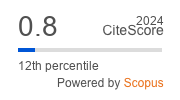PECULIARITIES OF A DEFECT GENERATION DURING A HEAT TREATMENT OF LARGE DIAMETER DISLOCATION−FREE SILICON WAFERS WITH SPECIFIED DISTRIBUTION OF OXYGEN−CONTAINING GETTERING CENTRES
https://doi.org/10.17073/1609-3577-2012-2-43-50
Abstract
For this purpose the opportunities of perfect layer formation during RTA have been analyzed in dislocation−free silicon wafers. The RTA application is based on an opportunity of effective influence on a distribution of oxygen precipitate density on wafer thickness by means of control of vacancies and interstitial atoms distributions. However the decision of this important task is connected with an oc-currence of large local wafer stresses concentrated near fastening supports and a significant bend of large diameter Si wafers. Therefore in this project the mathematical modeling of three−dimension strain state and defect formation in large diameter Si wafer were investigated: the various ways of wafer fastening were analyzed and the opportunities of stresses reduction in Si wafers were determined. For the description of RTA defect formation the mathematical model taking into account of diffusion−recombination processes of vacancies and interstitial Si atoms, and also formation of vacancy clusters have been applied. On the basis of this model the time thermal RTA parameters were determinated: heating mode, hold time at the maximal temperature and cooling rate of wafer. They provide a formation of required perfect layer near wafer surface contained the corresponding vacancy concentration and cluster density on wafer thickness. The calculated results have been verified by authors of this project on test samples investigated by Light Microscopy (LM) and Transmission Electron Microscopy (TEM). Detailed LM and TEM researches of microdefect distributions and morphology have been carried out for the experimental Si wafers subjected to various RTA modes and multistage heat treatment in Belarusian plant «Integral».
About the Authors
Yu. B. VasilievBelarus
ведущий инженер управления главного технолога, ОАО «Интеграл», 220108, Республика Беларусь, г. Минск, ул. Казинца И.П. д. 121А,
N. A. Verezub
Russian Federation
кандидат физ.−мат. наук, старший научный сотрудник, Институт проблем механики им. А. Ю. Ишлинского РАН, 119526, г. Москва, просп. Вернадского, д. 101, корп. 1,
M. V. Mezhenniy
Russian Federation
зав.отделом диагностики, Государственное научное учреждение «Институт химических проблем микроэлектроники», 119017, г. Москва, Б. Толмачевский пер., д. 5, стр. 1
V. S. Prosolovitch
Belarus
кандидат физ.−мат. наук, зав. лаб, Белорусский госуниверситет, лаборатория спектроскопии полупроводников, 220030, Республика Беларусь, г. Минск, просп. Независимости, д. 4,
A. I. Prostomolotov
Russian Federation
доктор техн. наук, ведущий научный сотрудник, Институт проблем механики им. А. Ю. Ишлинского РАН, 119526, г. Москва, просп. Вернадского, д. 101, корп. 1,
V. Ya. Reznik
Russian Federation
старший научный сотрудник, Государственное научное учреждение «Институт химических проблем микроэлектроники», 119017, г. Москва, Б. Толмачевский пер., д. 5, стр. 1,
References
1. Falster, R. Rapid thermal processing and control of oxygen precipitation behavior in silicon wafers / R. Falster, V. V. Voronkov // Mater. Sci. Forum. − 2008. − V. 573—574. − P. 45—60.
2. Мильвидский, М. Г. Современное состояние технологии полупроводникового кремния / М. Г. Мильвидский / Материаловедение. − 2006. − № 11. − С. 15—26.
3. Pat. USA N 6250914 / H. Katsumata, H. Ito, H. Takahashi, T. Ohashi, S. Tobashi, K. Iwata; 2000.
4. Pat. USA N 6032724 / M. Hatta; 1997.
5. Pat. USA N 5791895 / Н.−S. Kyung, W.−S. Choi, J.−H. Shin; 1996.
6. Pat. USA N 6002109 / K. E. Johnsgard, B. S.Mattson, J. McDiarmid; 1995.
7. Fisher, A. Slip−free processing of 300 mm silicon batch wafers / A. Fisher, G. Richter, W. Kurner, P. Kucher // J. Appl. Phys. − 2000. − V. 87. − P. 1543
8. Kulkarni, M. S. Dynamics of point defects and formation of microdefects in Czochralski crystal growth: modeling, simulation and experiments / M. S. Kulkarni, V. Voronkov, R. Falster // Electrochem. Soc. Proc. − 1998. − V. 98−1. − P. 468.
9. Prostomolotov, A. Thermal optimization of Cz bulk growth and wafer annealing for crystalline dislocation−free silicon / A. Prostomolotov, N. Verezub, M. Mezhennyi, V. Resnik // J. Cryst. Growth. − 2011. − V. 318, N 1. − P. 187—192.
Review
For citations:
Vasiliev Yu.B., Verezub N.A., Mezhenniy M.V., Prosolovitch V.S., Prostomolotov A.I., Reznik V.Ya. PECULIARITIES OF A DEFECT GENERATION DURING A HEAT TREATMENT OF LARGE DIAMETER DISLOCATION−FREE SILICON WAFERS WITH SPECIFIED DISTRIBUTION OF OXYGEN−CONTAINING GETTERING CENTRES. Izvestiya Vysshikh Uchebnykh Zavedenii. Materialy Elektronnoi Tekhniki = Materials of Electronics Engineering. 2012;(2):43-50. (In Russ.) https://doi.org/10.17073/1609-3577-2012-2-43-50





































